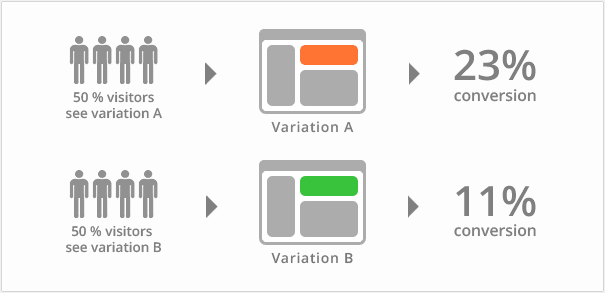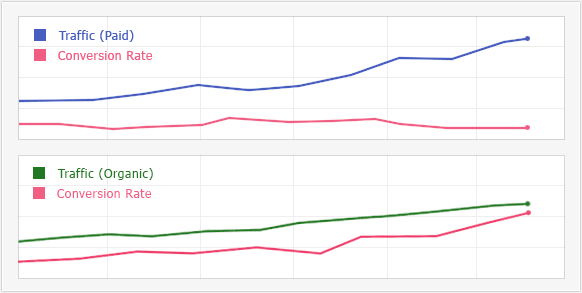What is A/B Testing and why is it so important?
Experimenting with A/B Testing is an important marketing strategy that goes a long way in maximising your conversions.
With A/B Testing you can start improving your conversions and sales in your existing website or app by creating different versions of a web page or mobile app screen to find out how to modify your website to optimize business success.
What is A/B Testing?
A/B testing (sometimes called split testing) is comparing two versions of a web page to see which one performs better. You compare two web pages by showing the two variants (let’s call them A and B) to similar visitors at the same time. The one that gives a better conversion rate, wins!

All websites on the web have a goal - a reason for them to exist
- eCommerce websites want visitors buying products
- SaaS web apps want visitors signing up for a trial and converting to paid visitors
- News and media websites want readers to click on ads or sign up for paid subscriptions
Every business website wants visitors converting from just visitors to something else. The rate at which a website is able to do this is its “conversion rate”. Measuring the performance of a variation (A or B) means measuring the rate at which it converts visitors to goal achievers.
Why Should You A/B Test?
A/B testing allows you to make more out of your existing traffic. While the cost of acquiring paid traffic can be huge, the cost of increasing your conversions is minimal. To compare, a Small Business Plan of Visual Website Optimizer starts at $49. That’s the cost of 5 to 10 Google Adwords clicks. The Return On Investment of A/B testing can be massive, as even small changes on a landing page or website can result in significant increases in leads generated, sales and revenue.

What Can You Test?
Almost anything on your website that affects visitor behavior can be A/B tested.
Headlines, Sub headlines, Paragraph Text, Testimonials, Call to Action text, Call to Action Button, Links, Images, Content near the fold, Social proof, Media mentions, Awards and badges

Advanced tests can include pricing structures, sales promotions, free trial lengths, navigation and UX experiences, free or paid delivery, and more.
Example : 7 Dead-Simple A/B Tests You Should Run on Your Homepage
A/B Testing Process
The correct way to run an A/B testing experiment is to follow a scientific process. It includes the following steps:
Study your Website Data: Use a website analytics tool such as Google Analytics, and find the problem areas in your conversion funnel. For example, you can identify the pages with the highest bounce rate. Let’s say, your homepage has an unusually high bounce rate.
Observe User Behavior: Utilize visitor behavior analysis tools such as Heatmaps, Visitor Recordings, Form Analysis and On-page Surveys, and find what is stopping the visitors from converting. For example, “The CTA button is not prominent on the home page.”
Construct a Hypothesis: Per the insights from visitor behavior analysis tools, build a hypothesis aimed at increasing conversions. For example, “Increasing the size of the CTA button will make it more prominent and will increase conversions.”
Test your Hypothesis: Create a variation per your hypothesis, and A/B test it against the original page. For example, “A/B test your original home page against a version that has a larger CTA button.” Calculate the test duration with respect to the number of your monthly visitors, current conversion rate, and the expected change in the conversion rate. (Use our Bayesian Calculator here.)
Report results to all concerned: Let others in Marketing, IT, and UI/UX know of the test results and the insights generated.
Know More about AB Testing : vwo.com - AB Testing